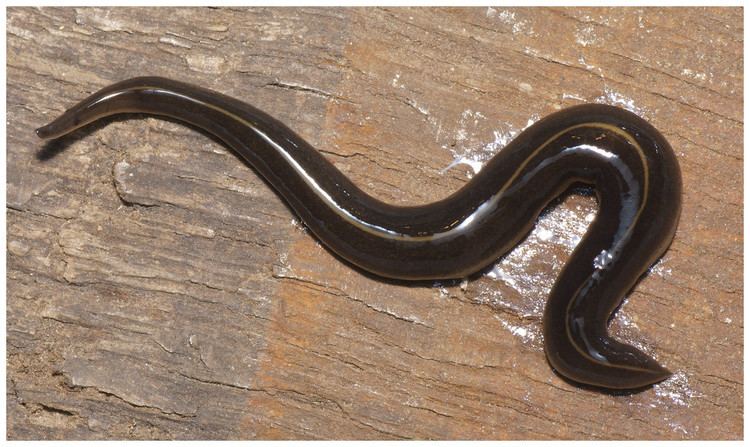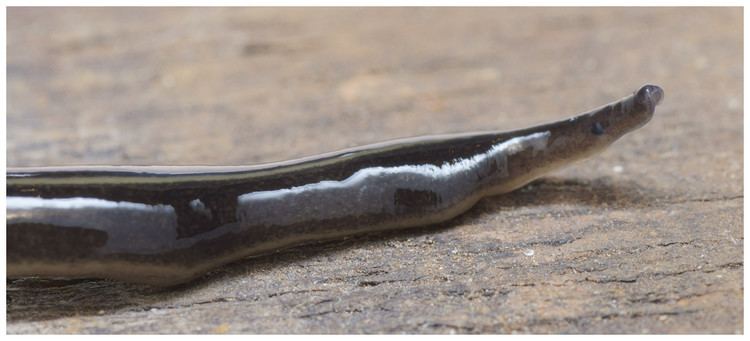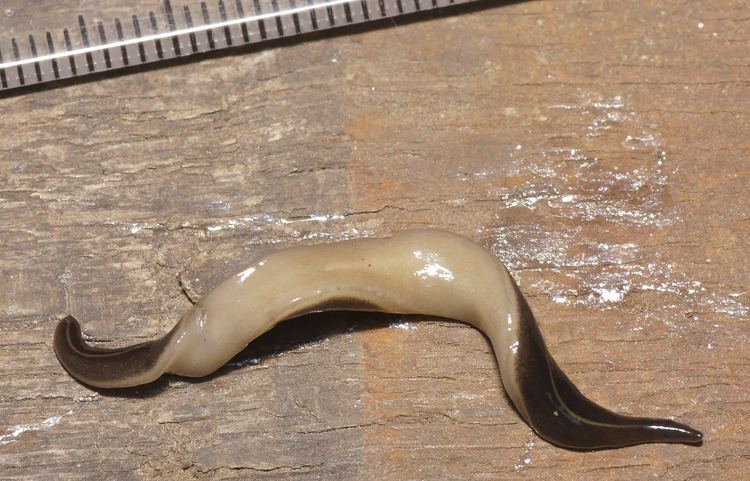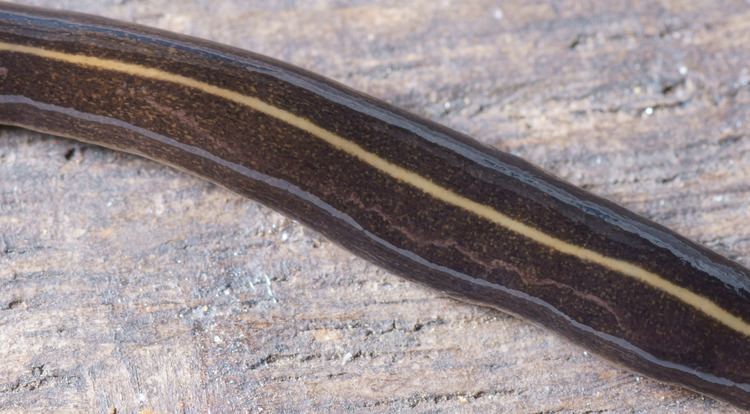Tribe Rhynchodemini Higher classification Platydemus Order Tricladida | Suborder Continenticola Subfamily Rhynchodeminae Genus Platydemus Phylum Platyhelminthes Rank Species | |
 | ||
Similar Geoplanidae, Euglandina rosea, New Zealand flatworm, Bipalium kewense, Arthurdendyus | ||
Platydemus manokwari, also known as the New Guinea flatworm, is a species of large predatory land flatworm.
Contents
- Platydemus manokwari as an invasive species top 6 facts
- Description
- Natural habitat
- Prey
- Predators
- Invasive species characteristics
- References
Native to New Guinea, it has been accidentally introduced to the soil of many countries, including the US. It was also deliberately introduced into two Pacific islands in an attempt to control an invasion of the Giant East African Snail. It eats a variety of invertebrates including land snails, and has had a significant negative impact on the rare endemic land snail fauna of some Pacific islands. It has become established in a wide variety of habitats.

Platydemus manokwari as an invasive species top 6 facts
Description

This flatworm is relatively large, about 40 to 65 mm in length and about 4–7 mm wide. Its body is however quite flat, being less than 2 mm in thickness. Both ends of the animal are pointed, but the head end is more pointed than the tail end. Near the tip of the head end are two eyes. The color of this animal is dark brown on the upper surface, with a lighter central line. The underside is pale grey.
Natural habitat

Platydemus manokwari is native to the island of New Guinea in the Pacific Ocean. This species of large flatworm preys on land mollusks and has been categorized as one of the 100 worst invasive species. It was discovered in 1962 by De Beauchamp in Queensland, Australia.

The original habitat of Platydemus manokwari is within tropical areas, but it has been found in almost all temperate regions of the world including in agricultural, coastland, and disturbed areas, as well as, natural forests, planted forests, riparian zones, scrub/shrublands, urban areas, and wetlands. However, Platydemus manokwari does not live in urban coastal areas, perhaps due to environmental factors, such as lack of vegetation.
Prey
Platydemus manokwari mainly preys on small land snails, but it has been known to feed on various soil invertebrates, such as earthworms, slugs, and arthropods. Platydemus manokwari is the main predator of land mollusks, and preys upon the snails during most of their life cycle including young hatchlings. Furthermore, Platydemus manokwari does not recognize early-stage snail eggs as a possible food source, but it does feed on young hatchlings and late-stage eggs of land snails. Platydemus manokwari uses a chemical-based tracking method to follow snail mucus trails and track down its prey, sometimes even into trees. In areas where the land snail population has been exhausted, it has been known to eat other flatworms. The diet of Platydemus manokwari is also affected seasonally. According to studies done by Sugiura, more than 90% of the land snails were preyed upon by Platydemus manokwari in the period from July to November, and only 40% of the land snails were eaten during the other months. It was thus found that there was a positive correlation between snail mortality and temperature. This seasonal difference can be explained by different foraging behaviors, different microclimactic conditions, and different densities.
Predators
There are no known predators of Platydemus manokwari. However, Platydemus manokwari is a paratenic host for the nematode Angiostrongylus cantonensis, also known as the rat lungworm. This nematode parasitizes Platydemus manokwari as well as the Giant African land snail, and both of these organisms are transmission vectors of the parasite. A. cantonensis parasitizes humans as well and causes angiostrongyliasis. Platydemus manokwari acts as a transmission vector of the parasite to humans and affects the epidemiology of angiostrongyliasis. In an outbreak of angiostrongyliasis in the Okinawa Prefecture, populations of Angiostrongylasis cantonensis intermediates were examined in order to find the most frequently infected intermediates. Platydemus manokwari was found to be one of the prevailing infected hosts, with an infection rate of 14.1%. It is likely that Platydemus manokwari is a vector because it deposits A. cantonensis larvae on the underside of cabbage leaves, where it commonly lives.
Invasive species characteristics
Platydemus manokwari has been introduced to several tropical and subtropical islands such as Micronesia, the Marquesas, the Society Islands, Samoa, Melanesia, and the Hawaiian Islands. These islands often harbor endemic radiations of rare and endangered snail species, which are a primary source of nutrition for Platydemus manokwari. Platydemus manokwari has also been introduced to several Japanese Islands.
